Premium Only Content
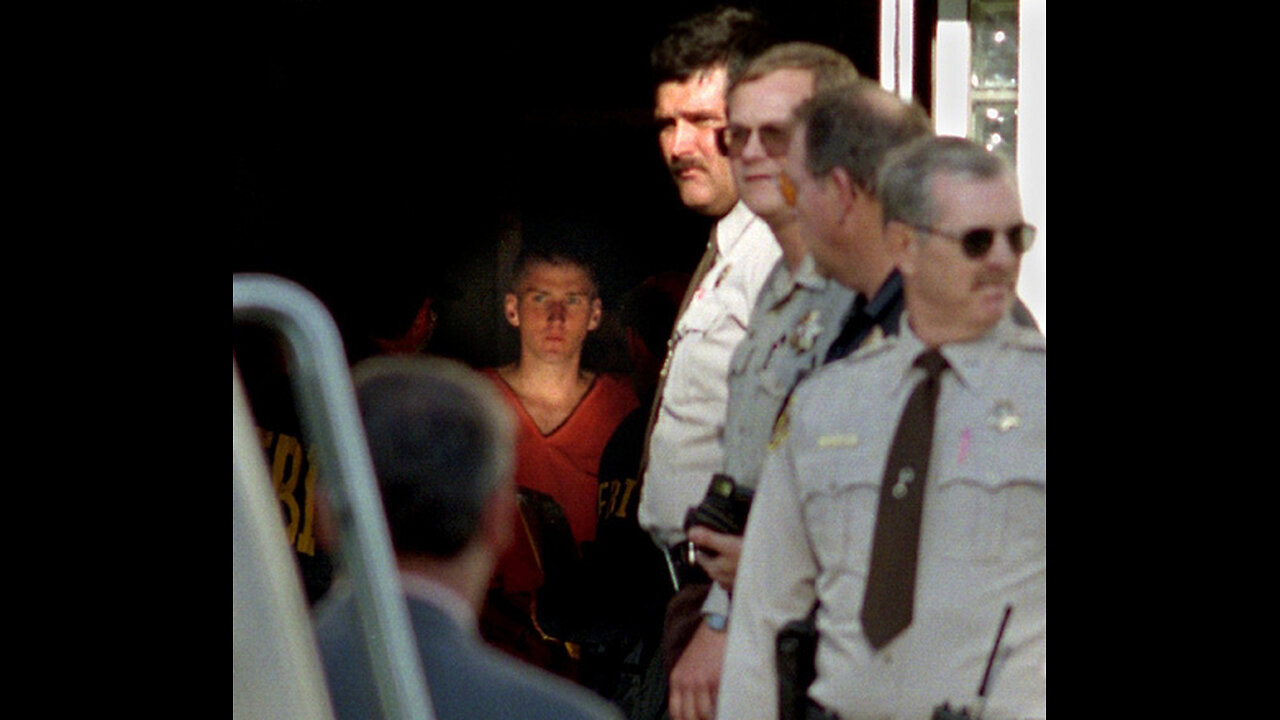
Lessons of Oklahoma City Bombing (2015)
The Federal Bureau of Investigation (FBI) led the official investigation, known as OKBOMB,[172] with Weldon L. Kennedy acting as special agent in charge.[173] Kennedy oversaw 900 federal, state, and local law enforcement personnel, including 300 FBI agents, 200 officers from the Oklahoma City Police Department, 125 members of the Oklahoma National Guard, and 55 officers from the Oklahoma Department of Public Safety.[174] The crime task force was deemed the largest since the investigation into the assassination of John F. Kennedy.[174] OKBOMB was the largest criminal case in America's history, with FBI agents conducting 28,000 interviews, amassing 3.5 short tons (3.2 t) of evidence, and collecting nearly one billion pieces of information.[14][16][175] Federal judge Richard Paul Matsch ordered that the venue for the trial be moved from Oklahoma City to Denver, Colorado, ruling that the defendants would be unable to receive a fair trial in Oklahoma.[176] The investigation led to the separate trials and convictions of McVeigh, Nichols and Fortier.
Timothy McVeigh
Main article: Timothy McVeigh
Opening statements in McVeigh's trial began on April 24, 1997. The United States was represented by a team of prosecutors led by Joseph Hartzler. In his opening statement Hartzler outlined McVeigh's motivations, and the evidence against him. McVeigh, he said, had developed a hatred of the government during his time in the army, after reading The Turner Diaries. His beliefs were supported by what he saw as the militia's ideological opposition to increases in taxes and the passage of the Brady Bill, and were further reinforced by the Waco and Ruby Ridge incidents.[9] The prosecution called 137 witnesses, including Michael Fortier and his wife Lori, and McVeigh's sister, Jennifer McVeigh, all of whom testified to confirm McVeigh's hatred of the government and his desire to take militant action against it.[177] Both Fortiers testified that McVeigh had told them of his plans to bomb the Alfred P. Murrah Federal Building. Michael Fortier revealed that McVeigh had chosen the date, and Lori Fortier testified that she had created the false identification card McVeigh used to rent the Ryder truck.[178]
McVeigh was represented by a team of six principal attorneys, led by Stephen Jones.[179] According to law professor Douglas O. Linder, McVeigh wanted Jones to present a "necessity defense"—which would argue that he was in "imminent danger" from the government (that his bombing was intended to prevent future crimes by the government, such as the Waco and Ruby Ridge incidents).[178] McVeigh argued that "imminent" does not mean "immediate": "If a comet is hurtling toward the earth, and it's out past the orbit of Pluto, it's not an immediate threat to Earth, but it is an imminent threat."[180] Despite McVeigh's wishes, Jones attempted to discredit the prosecution's case in an attempt to instill reasonable doubt. Jones also believed that McVeigh was part of a larger conspiracy, and sought to present him as "the designated patsy",[178] but McVeigh disagreed with Jones arguing that rationale for his defense. After a hearing, Judge Matsch independently ruled the evidence concerning a larger conspiracy to be too insubstantial to be admissible.[178] In addition to arguing that the bombing could not have been carried out by two men alone, Jones also attempted to create reasonable doubt by arguing that no one had seen McVeigh near the scene of the crime, and that the investigation into the bombing had lasted only two weeks.[178] Jones presented 25 witnesses, including Frederic Whitehurst, over a one-week period. Although Whitehurst described the FBI's sloppy investigation of the bombing site and its handling of other key evidence, he was unable to point to any direct evidence that he knew to be contaminated.[178]
A key point of contention in the case was the unmatched left leg found after the bombing. Although it was initially believed to be from a male, it was later determined to belong to Lakesha Levy, a female member of the Air Force who was killed in the bombing.[181] Levy's coffin had to be re-opened so that her leg could replace another unmatched leg that had previously been buried with her remains. The unmatched leg had been embalmed, which prevented authorities from being able to extract DNA to determine its owner.[101] Jones argued that the leg could have belonged to another bomber, possibly John Doe No. 2.[101] The prosecution disputed the claim, saying that the leg could have belonged to any one of eight victims who had been buried without a left leg.[102]
Numerous damaging leaks, which appeared to originate from conversations between McVeigh and his defense attorneys, emerged. They included a confession said to have been inadvertently included on a computer disk that was given to the press, which McVeigh believed seriously compromised his chances of getting a fair trial.[178] A gag order was imposed during the trial, prohibiting attorneys on either side from commenting to the press on the evidence, proceedings, or opinions regarding the trial proceedings. The defense was allowed to enter into evidence six pages of a 517-page Justice Department report criticizing the FBI crime laboratory and David Williams, one of the agency's explosives experts, for reaching unscientific and biased conclusions. The report claimed that Williams had worked backward in the investigation rather than basing his determinations on forensic evidence.[182]
The jury deliberated for 23 hours. On June 2, 1997, McVeigh was found guilty on 11 counts of murder and conspiracy.[183][184] Although the defense argued for a reduced sentence of life imprisonment, McVeigh was sentenced to death.[185] In May 2001, the Justice Department announced that the FBI had mistakenly failed to provide over 3,000 documents to McVeigh's defense counsel.[186] The Justice Department also announced that the execution would be postponed for one month for the defense to review the documents. On June 6, federal judge Richard Paul Matsch ruled the documents would not prove McVeigh innocent and ordered the execution to proceed.[187] McVeigh invited conductor David Woodard to perform pre-requiem Mass music on the eve of his execution; while reproachful of McVeigh's capital wrongdoing, Woodard consented.[188]: 240–241 After President George W. Bush approved the execution (McVeigh was a federal inmate and federal law dictates that the president must approve the execution of federal prisoners), he was executed by lethal injection at the Federal Correctional Complex, Terre Haute in Terre Haute, Indiana, on June 11, 2001.[189][190][191] The execution was transmitted on closed-circuit television so that the relatives of the victims could witness his death.[192] McVeigh's execution was the first federal execution in 38 years.[193]
Terry Nichols
Main article: Terry Nichols
Nichols stood trial twice. He was first tried by the federal government in 1997, and found guilty of conspiring to build a weapon of mass destruction and of eight counts of involuntary manslaughter of federal officers.[194] After he was sentenced on June 4, 1998, to life without parole, the State of Oklahoma in 2000 sought a death-penalty conviction on 161 counts of first-degree murder (160 non-federal-agent victims and one fetus).[195] On May 26, 2004, the jury found him guilty on all charges, but deadlocked on the issue of sentencing him to death. Presiding Judge Steven W. Taylor then determined the sentence of 161 consecutive life terms without the possibility of parole.[196] In March 2005, FBI investigators, acting on a tip from Gregory Scarpa Jr., searched a buried crawl space in Nichols's former house, and found additional explosives missed in the preliminary search after Nichols was arrested.[197]
Michael and Lori Fortier
Michael and Lori Fortier were considered accomplices for their foreknowledge of the planning of the bombing. In addition to Michael Fortier's assisting McVeigh in scouting the federal building, Lori Fortier had helped McVeigh laminate the fake driver's license that was later used to rent the Ryder truck.[46] Michael Fortier agreed to testify against McVeigh and Nichols in exchange for a reduced sentence and immunity for his wife.[198] He was sentenced on May 27, 1998, to 12 years in prison, and fined $75,000 for failing to warn authorities about the attack.[199] On January 20, 2006, Fortier was released from prison, transferred into the Witness Protection Program, and given a new identity.[200]
Others
No "John Doe #2" was ever identified, nothing conclusive was ever reported regarding the owner of the unmatched leg, and the government never openly investigated anyone else in conjunction with the bombing. Although the defense teams in both McVeigh's and Nichols's trials suggested that others were involved, Judge Steven W. Taylor found no credible, relevant, or legally admissible evidence of anyone other than McVeigh and Nichols having directly participated in the bombing.[178] When McVeigh was asked if there were other conspirators in the bombing, he replied: "You can't handle the truth! Because the truth is, I blew up the Murrah Building, and isn't it kind of scary that one man could wreak this kind of hell?"[201] On the morning of McVeigh's execution a letter was released in which he had written "For those die-hard conspiracy theorists who will refuse to believe this, I turn the tables and say: Show me where I needed anyone else. Financing? Logistics? Specialized tech skills? Brainpower? Strategy? ... Show me where I needed a dark, mysterious 'Mr. X'!"[202]
Aftermath
Within 48 hours of the attack, and with the assistance of the General Services Administration (GSA), the targeted federal offices were able to resume operations in other parts of the city.[203] According to Mark Potok, director of Intelligence Project at the Southern Poverty Law Center, his organization tracked another 60 domestic smaller-scale terrorism plots from 1995 to 2005.[204][205] Several of the plots were uncovered and prevented while others caused various infrastructure damage, deaths, or other destruction. Potok revealed that in 1996 there were approximately 858 domestic militias and other antigovernment groups but the number had dropped to 152 by 2004.[206] Shortly after the bombing, the FBI hired an additional 500 agents to investigate potential domestic terrorist attacks.[207] A 2005 Federal Bureau of Investigations report said the bombing "brought the threat of right-wing terrorism to the forefront of American law enforcement attention."[208]
Legislation
Part of a series on
Terrorism
Definitions History Incidents
By ideology
Structure
MethodsTactics
Terrorist groups
Adherents
Response to terrorism
vte
In the wake of the bombing, the U.S. government enacted several pieces of legislation including the Antiterrorism and Effective Death Penalty Act of 1996.[17] In response to the trials of the conspirators being moved out-of-state, the Victim Allocution Clarification Act of 1997 was signed on March 20, 1997, by President Clinton to allow the victims of the bombing (and the victims of any other future acts of violence) the right to observe trials and to offer impact testimony in sentencing hearings. In response to passing the legislation, Clinton stated that "when someone is a victim, he or she should be at the center of the criminal justice process, not on the outside looking in."[209]
In the years since the bombing, scientists, security experts, and the ATF have called on Congress to develop legislation that would require customers to produce identification when purchasing ammonium nitrate fertilizer, and for sellers to maintain records of its sale. Critics argue that farmers lawfully use large quantities of the fertilizer,[210] and as of 2009, only Nevada and South Carolina require identification from purchasers.[210] In June 1995, Congress enacted legislation requiring chemical taggants to be incorporated into dynamite and other explosives so that a bomb could be traced to its manufacturer.[211] In 2008, Honeywell announced that it had developed a nitrogen-based fertilizer that would not detonate when mixed with fuel oil. The company got assistance from the Department of Homeland Security to develop the fertilizer (Sulf-N 26) for commercial use.[212] It uses ammonium sulfate to make the fertilizer less explosive.[213]
Oklahoma school curriculum
In the decade following the bombing, there was criticism of Oklahoma public schools for not requiring the bombing to be covered in the curriculum of mandatory Oklahoma history classes. Oklahoma History is a one-semester course required by state law for graduation from high school; however, the bombing was only covered for one to two pages at most in textbooks. The state's PASS standards (Priority Academic Student Skills) did not require that a student learn about the bombing, and focused more on other subjects such as corruption and the Dust Bowl.[214] On April 6, 2010, House Bill 2750 was signed by Governor Brad Henry, requiring the bombing to be entered into the school curriculum for Oklahoma, U.S. and world history classes.[215][216][217]
On the signing, Governor Henry said, "Although the events of April 19, 1995, may be etched in our minds and in the minds of Oklahomans who remember that day, we have a generation of Oklahomans that has little to no memory of the events of that day ... We owe it to the victims, the survivors and all of the people touched by this tragic event to remember April 19, 1995, and understand what it meant and still means to this state and this nation."[217]
Building security and construction
Two images are stitched together showing the site of where the building stood prior to its demolition. A crowd of people are visible in front of the chain link fence blocking entrance to the site. Large piles of dirt can be seen on the site as well as damage to nearby buildings.
The site of the building after it was demolished, three months after the bombing
In the weeks following the bombing, the federal government ordered that all federal buildings in all major cities be surrounded with prefabricated Jersey barriers to prevent similar attacks.[218] As part of a longer-term plan for United States federal building security, most of those temporary barriers have since been replaced with permanent and more aesthetically considerate security barriers, which are driven deep into the ground for sturdiness.[219][220] All new federal buildings must now be constructed with truck-resistant barriers and with deep setbacks from surrounding streets to minimize their vulnerability to truck bombs.[221][222][223] FBI buildings, for instance, must be set back 100 feet (30 m) from traffic.[224] The total cost of improving security in federal buildings across the country in response to the bombing reached over $600 million.[225]
The Murrah Federal Building had been considered so safe that it only employed one security guard.[226] In June 1995, the DOJ issued Vulnerability Assessment of Federal Facilities, also known as The Marshals Report, the findings of which resulted in a thorough evaluation of security at all federal buildings and a system for classifying risks at over 1,300 federal facilities owned or leased by the federal government. Federal sites were divided into five security levels ranging from Level 1 (minimum security needs) to Level 5 (maximum).[227] The Alfred P. Murrah Building was deemed a Level 4 building.[228] Among the 52 security improvements were physical barriers, closed-circuit television monitoring, site planning and access, hardening of building exteriors to increase blast resistance, glazing systems to reduce flying glass shards and fatalities, and structural engineering design to prevent progressive collapse.[229][230]
The attack led to engineering improvements allowing buildings to better withstand tremendous forces, improvements which were incorporated into the design of Oklahoma City's new federal building. The National Geographic Channel documentary series Seconds From Disaster suggested that the Murrah Federal Building would probably have survived the blast had it been built according to California's earthquake design codes.[231]
Drag racing
The National Hot Rod Association has tightened its regulations for nitromethane.[232] Under the current rule book, nitromethane is limited to 400 pounds (180 kg), or 42 US gallons (160 L) in a barrel, instead of the normal 55 US gallons (210 L). The NHRA requires competitors to submit a Top Screen Questionnaire to the Department of Homeland Security. In addition, competitors are not allowed to own nitromethane; after all NHRA events, unused nitromethane must be returned to fuel supplier Sunoco.[citation needed]
Impact according to McVeigh
McVeigh believed that the bomb attack had a positive impact on government policy. In evidence he cited the peaceful resolution of the Montana Freemen standoff in 1996, the government's $3.1 million settlement with Randy Weaver and his surviving children four months after the bombing, and April 2000 statements by Bill Clinton regretting his decision to storm the Branch Davidian compound. McVeigh stated, "Once you bloody the bully's nose, and he knows he's going to be punched again, he's not coming back around."[233]
Evacuation issues
Several agencies, including the Federal Highway Administration and the City of Oklahoma City, have evaluated the emergency response actions to the bombing and have proposed plans for a better response in addition to addressing issues that hindered a smooth rescue effort.[234] Because of the crowded streets and the number of response agencies sent to the location, communication between government branches and rescue workers was muddled. Groups were unaware of the operations others were conducting, thus creating strife and delays in the search and rescue process. The City of Oklahoma City, in their After Action Report,[235] declared that better communication and single bases for agencies would better the aid of those in disastrous situations.
After the September 11 attacks in 2001, with consideration of other events, including the Oklahoma City bombing, the Federal Highway Administration proposed that major metropolitan areas create evacuation routes for civilians. These highlighted routes would allow paths for emergency crews and government agencies to enter disaster areas more quickly. By helping civilians get out and rescue workers get in, casualties would hopefully be decreased.[236]
Memorial observances
Oklahoma City National Memorial
Main article: Oklahoma City National Memorial
For two years after the bombing the only memorials to the victims were plush toys, crucifixes, letters, and other personal items left by thousands of people at a security fence surrounding the site of the building.[237][238] Many suggestions for suitable memorials were sent to Oklahoma City, but an official memorial planning committee was not set up until early 1996,[239] when the Murrah Federal Building Memorial Task Force, composed of 350 members, was set up to formulate plans for a memorial to commemorate the victims of the bombing.[160] On July 1, 1997, the winning design was chosen unanimously by a 15-member panel from 624 submissions.[240] The memorial was designed at a cost of $29 million, which was raised by public and private funds.[241][242] The national memorial is part of the National Park System as an affiliated area and was designed by Oklahoma City architects Hans and Torrey Butzer and Sven Berg.[238] It was dedicated by President Clinton on April 19, 2000, exactly five years after the bombing.[240][243] Within the first year, it had 700,000 visitors.[238]
The memorial includes a reflecting pool flanked by two large gates, one inscribed with the time 9:01, the other with 9:03, the pool representing the moment of the blast. On the south end of the memorial is a field of symbolic bronze and stone chairs—one for each person lost, arranged according to what floor of the building they were on. The chairs represent the empty chairs at the dinner tables of the victims' families. The seats of the children killed are smaller than those of the adults lost. On the opposite side is the "survivor tree", part of the building's original landscaping that survived the blast and fires that followed it. The memorial left part of the foundation of the building intact, allowing visitors to see the scale of the destruction. Part of the chain link fence put in place around the site of the blast, which had attracted over 800,000 personal items of commemoration later collected by the Oklahoma City Memorial Foundation, is now on the western edge of the memorial.[244] North of the memorial is the Journal Record Building, which now houses the Oklahoma City National Memorial Museum, an affiliate of the National Park Service. The building also contained the National Memorial Institute for the Prevention of Terrorism, a law enforcement training center.
A panoramic view of the memorial. In the center is a large stone structure shaped as a gate with "9:03" at the top. At the center of the gate is a large hole and through it a road can be seen. The Regency Towers building is visible on the right of the image in the background. The gate is reflecting in a pool of water in front of it, and grass and trees are visible to the left and right of the pool.
Panoramic view of the memorial, as seen from the base of the reflecting pool. From left to right are the memorial chairs, Gate of Time and Reflecting Pool, the Survivor Tree, and the Journal Record Building.
St. Joseph's Old Cathedral
St. Joseph's Old Cathedral, one of the first brick-and-mortar churches in the city, is located to the southwest of the memorial and was severely damaged by the blast.[245][246] To commemorate the event, a statue and sculpture work entitled And Jesus Wept was installed adjacent to the Oklahoma City National Memorial. The work was dedicated in May 1997 and the church was rededicated on December 1 of the same year. The church, the statue, and the sculpture are not part of the Oklahoma City memorial.[247]
Remembrance observance
An observance is held each year to remember the victims of the bombing. An annual marathon draws thousands, and allows runners to sponsor a victim of the bombing.[248][249] For the tenth anniversary of the bombing, the city held 24 days of activities, including a week-long series of events known as the National Week of Hope from April 17 to 24, 2005.[250][251] As in previous years, the tenth anniversary of the bombing observances began with a service at 9:02 a.m., marking the moment the bomb went off, with the traditional 168 seconds of silence—one second for each person who was killed as a result of the blast. The service also included the traditional reading of the names, read by children to symbolize the future of Oklahoma City.[252]
Vice President Dick Cheney, former President Clinton, Oklahoma Governor Brad Henry, Frank Keating, Governor of Oklahoma at the time of the bombing, and other political dignitaries attended the service and gave speeches in which they emphasized that "goodness overcame evil".[253] The relatives of the victims and the survivors of the blast also made note of it during the service at First United Methodist Church in Oklahoma City.[254]
President George W. Bush made note of the anniversary in a written statement, part of which echoed his remarks on the execution of Timothy McVeigh in 2001: "For the survivors of the crime and for the families of the dead the pain goes on."[255] Bush was invited but did not attend the service because he was en route to Springfield, Illinois, to dedicate the Abraham Lincoln Presidential Library and Museum. Cheney attended the service in his place.[253]
Due to the COVID-19 pandemic, the memorial site was closed to the public on April 19, 2020, and local television networks broadcast pre-recorded remembrances to mark the 25th anniversary.[256]
See also
flagOklahoma portaliconLaw portalflagUnited States portalicon1990s portal
2011 Norway attacks
AMIA bombing
List of terrorist incidents
Bath School disaster, the deadliest building bombing in the United States prior to the Oklahoma City bombing.
Explanatory notes
A severed left leg was found amongst the wreckage, but was never identified to a victim. It could have belonged to one of the 168 victims, or a 169th victim who was not found.
References
Oklahoma City Police Department Alfred P. Murrah Federal Building Bombing After Action Report (PDF). Terrorism Info. p. 58. Archived from the original (PDF) on July 3, 2007.
"Case Study 30: Preventing glass from becoming a lethal weapon". Safety Solutions Online. Archived from the original on February 13, 2007. Retrieved February 3, 2007.
Hewitt, Christopher (2003). Understanding Terrorism in America: From the Klan to al Qaeda. Routledge. p. 106. ISBN 978-0-415-27765-5.
"Responding to Terrorism Victims: Oklahoma City and Beyond: Chapter II: The Immediate Crisis Response". U.S. Department of Justice. October 2000. Archived from the original on April 25, 2009. Retrieved March 24, 2009.
"FEMA Urban Search and Rescue (USAR) Summaries" (PDF). Federal Emergency Management Agency. p. 64. Archived from the original (PDF) on September 27, 2006.
"Timothy McVeigh is apprehended". NBC News Report. April 22, 1995. Archived from the original (Video, 3 minutes) on October 12, 2013.
Ottley, Ted (April 14, 2005). "License Tag Snag". truTV. Archived from the original on August 29, 2011.
Witkin, Gordon; Karen Roebuck (September 28, 1997). "Terrorist or Family Man? Terry Nichols goes on trial for the Oklahoma City bombing". U.S. News & World Report. Archived from the original on October 18, 2012.
Feldman, Paul (June 18, 1995). "Militia Groups Growing, Study Says Extremism: Despite negative publicity since Oklahoma bombing, membership has risen, Anti-Defamation League finds". Los Angeles Times. Archived from the original on July 25, 2012. Retrieved April 7, 2010.
"McVeigh offers little remorse in letters". The Topeka Capital-Journal. Associated Press. June 10, 2001. Archived from the original on May 27, 2012. Retrieved June 1, 2009.
Thomas, Jo; Ronald Smothers (May 20, 1995). "Oklahoma City Building Was Target Of Plot as Early as '83, Official Says". The New York Times. Archived from the original on January 7, 2013.
"The Oklahoma City Bomb Trial: The Denver Post Online". extras.denverpost.com. Retrieved March 22, 2024.
"Oklahoma City Bombing". Federal Bureau of Investigation. Retrieved April 7, 2023.
Serano, Richard. One of Ours: Timothy McVeigh and the Oklahoma City Bombing. pp. 139–141.
"Lessons learned, and not learned, 11 years later". NBC News. Associated Press. April 16, 2006.
Hamm, Mark S (1997). Apocalypse in Oklahoma. Northeastern University Press. p. vii. ISBN 978-1-55553-300-7.
Doyle, Charles (June 3, 1996). "Antiterrorism and Effective Death Penalty Act of 1996: A Summary". FAS. Archived from the original on March 14, 2011. Retrieved November 25, 2015.
Swickard, Joe (May 11, 1995). "The Life of Terry Nichols". The Seattle Times. Archived from the original on September 27, 2012. Retrieved May 23, 2023.
"Bombing Trial". Online Focus. Public Broadcasting Service. May 13, 1997. Archived from the original on January 25, 2011. Retrieved September 7, 2017.
Johnson, Kevin (April 16, 2010). "As Okla. City date nears, militias seen as gaining strength". USA Today. Archived from the original on January 5, 2013. Retrieved May 23, 2023.
Means, Marianne (April 20, 1996). "Search for meaning produces scapegoats" (Fee required). The Tampa Tribune. Retrieved May 25, 2010.[dead link]
Belew, Kathleen (2019). Bring the War Home: The White Power Movement and Paramilitary America. Harvard University Press. p. 210. ISBN 978-0-674-23769-8.
"25 years later, Oklahoma City bombing still inspires antigovernment extremists". Southern Poverty Law Center. Retrieved December 23, 2020.
Caesar, Ed (December 14, 2008). "The British Waco survivors". The Sunday Times. London. Archived from the original on June 29, 2011.
Baker, Al; Dave Eisenstadt; Paul Schwartzman; Karen Ball (April 22, 1995). "Revenge for Waco Strike Former Soldier is Charged in Okla. Bombing". Daily News. New York. Archived from the original on February 27, 2011.
Collins, James; Patrick E. Cole; Elaine Shannon (April 28, 1997). "Oklahoma City: The Weight of Evidence". Time. pp. 1–8. Archived from the original on February 11, 2012. Retrieved March 25, 2009.
"McVeigh's Apr. 26 Letter to Fox News". Fox News Channel. April 26, 2001. Archived from the original on February 9, 2011.
Russakoff, Dale; Serge F. Kovaleski (July 2, 1995). "An Ordinary Boy's Extraordinary Rage". The Washington Post. Archived from the original on January 31, 2011.
Brannan, David (2010). "Left- and Right-wing Political Terrorism". In Tan, Andrew T .H. (ed.). Politics of Terrorism: A Survey. Routledge. pp. 68–69. ISBN 978-1-85743-579-5.
Saulny, Susan (April 27, 2001). "McVeigh Says He Considered Killing Reno". The New York Times. Archived from the original on July 14, 2012. Retrieved March 28, 2010.
"McVeigh Considered Assassination of Reno, Other Officials". Fox News Channel. April 27, 2001. Archived from the original on February 9, 2011.
Michel & Herbeck (2001), p. 224.
Michel & Herbeck (2001), p. 167.
Michel & Herbeck (2001), pp. 168–169.
Lewis, Carol W. (May–June 2000). "The Terror that Failed: Public Opinion in the Aftermath of the Bombing in Oklahoma City". Public Administration Review. 60 (3): 201–210. doi:10.1111/0033-3352.00080. Archived from the original on March 7, 2012. Retrieved March 20, 2010.
Michel & Herbeck (2001), p. 226.
"Richard Wayne Snell (1930–1995)". Encyclopedia of Arkansas. Retrieved March 22, 2024.
"Jon Ronson on Timothy McVeigh". the Guardian. May 5, 2001. Retrieved March 22, 2024.
Smith, Martin. "McVeigh Chronology". Frontline. Public Broadcasting Service. Archived from the original on July 28, 2011.
Scarpa, Greg Jr. "AP Report of Possible Subcommittee Inquiry into Oklahoma City Bombing, Recent Intelligence Concerning (a) Involvement of FBI Informant; and (b) Imminent Threat" (PDF). Forensic Intelligence International. Archived from the original (PDF) on October 29, 2012. Retrieved June 5, 2009.
Ottley, Ted. "Imitating Turner". truTV. Archived from the original on January 19, 2012.
Michel & Herbeck (2001), p. 201.
Michel & Herbeck (2001), pp. 197–198.
"Evidence builds up against Nichols in trial". Boca Raton News. Associated Press. December 16, 1997. Archived from the original on November 25, 2015. Retrieved June 29, 2009.
Thomas, Jo (November 20, 1997). "Bomb Suspect Hid Cash, Ex-Wife Testifies". The New York Times. Archived from the original on June 5, 2013.
Thomas, Jo (April 30, 1996). "For First Time, Woman Says McVeigh Told of Bomb Plan". The New York Times. Archived from the original on April 25, 2009.
Michel & Herbeck (2001), pp. 163–164.
Transcript of May 1, 1995 hearing
Florio, Gwen (May 6, 1997). "McVeigh's Sister Takes the Stand Against Him He Spoke of Moving From Antigovernment Talk to Action, She Testified, and of Transporting Explosives". The Philadelphia Inquirer.
Michel & Herbeck (2001), p. 165.
Michel & Herbeck (2001), p. 166.
Michel & Herbeck (2001), p. 209.
Michel & Herbeck (2001), pp. 199, 209.
Chronis, Peter. "Key a 'stroke of genius'". The Denver Post. Archived from the original on June 16, 2013. Retrieved November 8, 2011.
Michel & Herbeck (2001), p. 212.
Baldwin, Diana (December 13, 1998). "FBI Will Follow Up Bomb Case Forever". News OK. Archived from the original on May 10, 2017. Retrieved September 11, 2016.
Michel & Herbeck (2001), pp. 206–208.
Michel & Herbeck (2001), p. 215.
Michel & Herbeck (2001), p. 216.
Michel & Herbeck (2001), pp. 217–218.
Michel & Herbeck (2001), p. 219.
Rogers, J. David; Keith D. Koper. "Some Practical Applications of Forensic Seismology" (PDF). Missouri University of Science and Technology. pp. 25–35. Archived (PDF) from the original on October 29, 2013. Retrieved June 5, 2009.
"McVeigh Held in Conjunction with Oklahoma City Bombing". mit.edu. Archived from the original on February 5, 2015. Retrieved June 21, 2014.
Clay, Nolan; Owen, Penny (May 12, 1997). "Prosecutors Add up Cost of Bomb: $5,000". The Oklahoman. Denver. Archived from the original on May 7, 2022. Retrieved January 12, 2024.
Michel & Herbeck (2001), p. 220.
"When government fears the people, there is liberty... (Spurious Quotation)". Thomas Jefferson's Monticello. Retrieved May 22, 2020. "We have not found any evidence that Thomas Jefferson said or wrote, "When government fears the people, there is liberty. When the people fear the government, there is tyranny," nor any evidence that he wrote its listed variations."
Michel & Herbeck (2001), p. 228.
Michel & Herbeck (2001), p. 229.
Tim, Talley (April 15, 2004). "Man testifies axle of truck fell from sky after Oklahoma City bombing". U-T San Diego. Archived from the original on March 13, 2012.
"A Study of the Oklahoma City Bombing". Homeland Security Television. 2006. 10:42 minutes in.
Irving, Clive (1995). In Their Name. Random House. p. 76. ISBN 978-0-679-44825-9.
"The Oklahoma Department of Civil Emergency Management After Action Report" (PDF). Department of Central Services Central Printing Division. 1996. p. 77. Archived (PDF) from the original on January 21, 2014. Retrieved June 26, 2009.
City of Oklahoma City Document Management (1996). Final Report. Fire Protection Publications, Oklahoma State U. pp. 10–12. ISBN 978-0-87939-130-0.
Irving, Clive (1995). In Their Name. Random House. p. 52. ISBN 978-0-679-44825-9.
"Responding to Terrorism Victims: Oklahoma City and Beyond: Chapter I, Bombing of the Alfred P. Murrah Federal Building". U.S. Department of Justice. October 2000. Archived from the original on November 5, 2010.
Hewitt, Christopher (2003). Understanding Terrorism in America. p. 106. ISBN 978-0-415-27766-2.
Mlakar, Paul F. Sr.; W. Gene Corley; Mete A. Sozen; Charles H. Thornton (August 1998). "The Oklahoma City Bombing: Analysis of Blast Damage to the Murrah Building". Journal of Performance of Constructed Facilities. 12 (3): 113–119. doi:10.1061/(ASCE)0887-3828(1998)12:3(113).
Holzer, T. L.; Joe B. Fletcher; Gary S. Fuis; Trond Ryberg; Thomas M. Brocher; Christopher M. Dietel (1996). "Seismograms Offer Insight into Oklahoma City Bombing". Eos, Transactions American Geophysical Union. 77 (41): 393, 396–397. Bibcode:1996EOSTr..77..393H. doi:10.1029/96EO00269. Archived from the original on November 13, 2007. Retrieved March 25, 2009.
"The Bomb in Oklahoma City" ("Oklahoma City"). Seconds From Disaster.
Hamm, Mark S (1997). Apocalypse in Oklahoma. Northeastern University Press. pp. 62–63. ISBN 978-1-55553-300-7.
"Library Factfiles: The Oklahoma City Bombing". The Indianapolis Star. August 9, 2004. Archived from the original on April 28, 2011. Retrieved March 31, 2006.
Crogan, Jim (March 24, 2004). "Secrets of Timothy McVeigh". LA Weekly. Archived from the original on May 25, 2011.
Zucchino, David (May 14, 1995). "Tracing a Trail to Destruction; The Clues from the Oklahoma City Bombing Have Led to; A Small Circle of Malcontents – Not a Wide Network" (Fee required). The Philadelphia Inquirer. Archived from the original on June 9, 2011. Retrieved June 14, 2009.
Morava, Kim (February 24, 2009). "Trooper who arrested Timothy McVeigh shares story". Shawnee News-Star. Archived from the original on June 9, 2011. Retrieved April 18, 2010.
"Turning to evidence: axle and fingerprints". Kingman Daily Miner. Associated Press. April 21, 1997. Archived from the original on November 25, 2015. Retrieved June 27, 2009.
Hamm, Mark S (1997). Apocalypse in Oklahoma. Northeastern University Press. p. 65. ISBN 978-1-55553-300-7.
Ottley, Ted (April 14, 2005). "Innocence Lost". truTV. Archived from the original on January 12, 2011.
April 22, 1995 Bomb Suspect Charged, The Oklahoman, April 22, 1995. (accessed January 30, 2014, Registration Required)
Michel & Herbeck (2001), p. 270.
"A Study of the Oklahoma City Bombing". Homeland Security Television. 2006. 11:07 minutes in.
Michel & Herbeck (2001), p. 274.
"The Oklahoma City Bombing Case: The Second Trial". CourtTV News. Archived from the original on February 13, 2008.
"Michael Moore didn't libel bomber's brother, court says". USA Today. Associated Press. February 20, 2007. Archived from the original on February 24, 2007.
Michel, Lou; Susan Schulman (April 29, 1995). "McVeigh Tried to Have Ammo Mailed His Sister Picked Up Supply After Store Refused His Request to Ship It" (Fee required). The Buffalo News. Archived from the original on June 9, 2011. Retrieved April 7, 2010.
Church, George J.; Patrick E. Cole (August 14, 1995). "The Matter of Tim McVeigh". Time. p. 2. Archived from the original on November 5, 2012. Retrieved June 27, 2009.
Fuchs, Penny Bender (June 1995). "Jumping to Conclusions in Oklahoma City?". American Journalism Review. Archived from the original on December 5, 2010.
Hamm, Mark S (1997). Apocalypse in Oklahoma. Northeastern University Press. p. 63. ISBN 978-1-55553-300-7.
Kempster, Norman (April 1995). "TERROR IN OKLAHOMA CITY : Man Returned to United States Is Not a Suspect". LA Times.
Figley, Charles R (2002). treating Compassion Fatigue. Brunner-Routledge. p. 61. ISBN 978-1-58391-053-5.
"April 19, 1995". World News Tonight With Peter Jennings. Season 31. April 19, 1995. ABC.
Thomas, Jo (May 23, 1997). "McVeigh Defense Team Suggests Real Bomber Was Killed in Blast". The New York Times. Archived from the original on December 5, 2010.
Miller, Richard Earl (2018). "Writing at the End of the World". Nature. 555 (7695): 100. Bibcode:2018Natur.555..280Y. doi:10.1038/d41586-018-02750-3. PMID 32095008. S2CID 3724280.
United States Department of Defense (January 25, 2005). "Design of Buildings to Resist Progressive Collapse" (PDF). General Services Administration. p. 14. Archived from the original (PDF) on December 24, 2013. Retrieved June 5, 2009.
Mallonee, Sue; Sheryll Shariat; Gail Stennies; Rick Waxweiler; David Hogan; Fred Jordan (1996). "Physical Injuries and Fatalities Resulting From the Oklahoma City Bombing". Journal of the American Medical Association. 276 (5): 382–387. doi:10.1001/jama.276.5.382. PMID 8683816.
"Victims of the Oklahoma City bombing". USA Today. Associated Press. June 20, 2001. Archived from the original on February 15, 2012.
Michel & Herbeck (2001), p. 234.
(subscription required)Chris Casteel (April 29, 2015). "Oklahoma U.S. Rep. Steve Russell seeks Purple Hearts for six Oklahoma City bombing victims". The Oklahoman. Archived from the original on June 24, 2015. Retrieved June 24, 2015.
Romano, Lois (December 30, 1997). "Prosecutors Seek Death For Nichols". The Washington Post. p. A3. Archived from the original on November 30, 2010.
Irving, Clive (1995). In Their Name. New York : Random House. p. 82. ISBN 978-0-679-44825-9.
Irving, Clive (1995). In Their Name. New York : Random House. pp. 96–97. ISBN 978-0-679-44825-9.
Hamm, Mark S (1997). Apocalypse in Oklahoma. Northeastern University Press. p. 73. ISBN 978-1-55553-300-7.
Shariat, Sheryll; Sue Mallonee; Shelli Stephens-Stidham (December 1998). "Oklahoma City Bombing Injuries" (PDF). Injury Prevention Service, Oklahoma State Department of Health. Archived from the original (PDF) on May 18, 2014. Retrieved August 9, 2014. Shariat et al. count only 167 killed "as a direct result of the bombing or during escape". They did not include Rebecca Needham Anderson, who – having seen the bombing on TV in Midwest City, Oklahoma – came to the rescue and was killed by a piece of falling debris. "The Final Sacrifice of a Gallant Nurse" Archived August 10, 2014, at the Wayback Machine
Michel & Herbeck (2001), p. 225.
Eddy, Mark. "April 19, 1995". The Denver Post. Archived from the original on September 28, 2011.
Winthrop, Jim (July 1997). "The Oklahoma City Bombing: Immediate Response Authority and Other Military Assistance to Civil Authority (MACA)". The Army Lawyer. Archived from the original on September 27, 2015.
"Reluctant Hero of the Oklahoma City Bombing Commits Suicide". AP NEWS. Retrieved March 18, 2020.
Ap (May 11, 1996). "A Policeman Who Rescued 4 in Bombing Kills Himself". The New York Times. ISSN 0362-4331. Retrieved March 18, 2020.
"Jim Ramsey: Tragedy haunts the heroes - Chicago Tribune". Chicago Tribune. November 7, 2018. Archived from the original on November 7, 2018. Retrieved March 18, 2020.
Davis, G (1995). "Victims by the Hundreds: EMS Response and Command". Fire Engineering. 148 (10): 98–107. Archived from the original on May 10, 2017. Retrieved November 17, 2012.
Giordano, Geraldine (December 15, 2002). The Oklahoma City Bombing. New York : Rosen. p. 36. ISBN 978-0-8239-3655-7.
Irving, Clive (1995). In Their Name. New York : Random House. p. 68. ISBN 978-0-679-44825-9.
Ottley, Ted (April 14, 2005). "The Oklahoma City Bombing: Bad Day Dawning". truTV. Archived from the original on April 27, 2011.
Irving, Clive (1995). In Their Name. New York : Random House. p. 78. ISBN 978-0-679-44825-9.
Solomon, John (September 26, 2002). "Gov't had missile in Murrah Building". Associated Press. Archived from the original on November 4, 2012. Retrieved June 5, 2009.
Talley, Tim (April 23, 2004). "Nichols Jury Hears Recording of Bombing". Associated Press. Archived from the original on November 5, 2012. Retrieved February 27, 2011 – via HighBeam Research.
Driver, Don; Marty Sabota (April 23, 1995). "Rescuers search through chill for a miracle". San Antonio Express-News. Archived from the original on June 9, 2011. Retrieved April 7, 2010.
Figley, Charles R (2002). Treating Compassion Fatigue. Brunner-Routledge. p. 62. ISBN 978-1-58391-053-5.
Irving, Clive (1995). In Their Name. New York : Random House. p. 103. ISBN 978-0-679-44825-9.
Giordano, Geraldine (December 15, 2002). The Oklahoma City Bombing. New York : Rosen. p. 34. ISBN 978-0-8239-3655-7.
Irving, Clive (1995). In Their Name. New York : Random House. p. 86. ISBN 978-0-679-44825-9.
Linenthal, Edward (2003). The Unfinished Bombing: Oklahoma City in American Memory. Oxford University Press. p. 140. ISBN 978-0-19-516107-6.
Stickney, Brandom M (1996). All-American Monster. Prometheus Books. p. 234. ISBN 978-1-57392-088-9.
Candiotti, Susan (May 23, 1995). "Federal Building Demolition". CNN. Archived from the original on March 8, 2008.
Linenthal, Edward (2003). The Unfinished Bombing: Oklahoma City in American Memory. Oxford University Press. pp. 142–144. ISBN 978-0-19-516107-6.
Linenthal, Edward (2003). The Unfinished Bombing: Oklahoma City in American Memory. Oxford University Press. p. 47. ISBN 978-0-19-516107-6.
"$10 million collected for bombing victims". The Pantagraph. Associated Press. June 5, 1995.
Hamm, Mark S (1997). Apocalypse in Oklahoma. Northeastern University Press. p. 60. ISBN 978-1-55553-300-7.
"San Diego Blood Bank History". San Diego Blood Bank. Archived from the original on March 2, 2011. Retrieved February 6, 2007.
Heinrich, Janet (September 10, 2002). "Maintaining an Adequate Blood Supply Is Key to Emergency Preparedness" (PDF). Government Accountability Office. Archived from the original (PDF) on December 24, 2013. Retrieved September 25, 2011.
Hamm, Mark S (1997). Apocalypse in Oklahoma. Northeastern University Press. p. 46. ISBN 978-1-55553-300-7.
Hamm, Mark S (1997). Apocalypse in Oklahoma. Northeastern University Press. pp. 57–58. ISBN 978-1-55553-300-7.
Hamm, Mark S (1997). Apocalypse in Oklahoma. Northeastern University Press. p. 71. ISBN 978-1-55553-300-7.
Keating, Frank (August 31, 1999). "Where Terrorists Belong". The New York Times. Archived from the original on June 5, 2013.
Witt, Howard (April 17, 2005). "Torment lingers in OK City". Chicago Tribune. Archived from the original on October 25, 2012.
"Meet Our President/CEO". Goodwill Industries. Archived from the original on April 26, 2007. Retrieved November 10, 2006.
"Friend, Foe United in Vilifying Attack Reaction: Compassion for victims' families, disgust at blast's callousness run as common threads through world leaders' responses". Los Angeles Times. April 21, 1995. Archived from the original (Fee required) on July 25, 2012. Retrieved April 7, 2010.
"'How Deeply We Share the Sorrow' Rabin Also Offers Help; Boutros-Ghali Condemns 'Cowardly Attack'". St. Louis Post-Dispatch. April 20, 1995.
"A Mother's Pain For Ever Frozen in Time". The Star. Associated Press. April 19, 2005.
"FBI: McVeigh knew children would be killed in OKC blast". CNN. March 29, 2001. Archived from the original on May 10, 2008. Retrieved March 27, 2009.
Global Terrorism Database Archived 2008-06-29 at the Wayback Machine
Romano, Lois; Kenworthy, Tom (April 25, 1997). "Prosecutor Paints McVeigh As 'Twisted' U.S. Terrorist". The Washington Post. p. A01. Archived from the original on September 17, 2017. Retrieved September 16, 2017.
Schoenburg, Bernard. "McVeigh prosecutor: Focus on victims of Oklahoma City bombing". The State Journal-Register. Archived from the original on February 29, 2012. Retrieved April 19, 2010.
Sturken, Marita (November 2007). Tourists of History. Duke University Press. p. 98. ISBN 978-0-8223-4122-2.
"1996 Pulitzer Prizes-Spot News Photography". Pulitzer Prize. Archived from the original on May 24, 2011.
West, Lance (March 22, 2017). ""It's still tough to talk about," Firefighter from iconic Oklahoma City bombing photo retires". News Channel 4. Archived from the original on March 22, 2017. Retrieved March 22, 2017.
Pfefferbaum, Betty (April 23, 2009). "The impact of the Oklahoma City bombing on children in the community" (Fee required). Military Medicine. 166 (12): 49–50. doi:10.1093/milmed/166.suppl_2.49. PMID 11778433. Archived from the original on February 19, 2014. Retrieved March 3, 2007.
Pfefferbaum, Betty; Sconzo, Guy M.; Flynn, Brian W.; Kearns, Lauri J.; Doughty, Debby E.; Gurwitch, Robin H.; Nixon, Sara Jo; Nawaz, Shajitha (2003). "Case Finding and Mental Health Services for Children in the Aftermath of the Oklahoma City Bombing". Journal of Behavioral Health Services & Research. 30 (2): 215–227. doi:10.1097/00075484-200304000-00006. PMID 12710374.
Leland, John (April 22, 1996). "The orphans of Oklahoma City". Newsweek. Vol. 127, no. 17. p. 40. Archived from the original on May 10, 2017. Retrieved November 27, 2012.
Hamm, Mark S (1997). Apocalypse in Oklahoma. Northeastern University Press. p. 54. ISBN 978-1-55553-300-7.
Loe, Victoria (July 5, 1997). "Berlin-Based Team's Design Chosen for Bomb Memorial; Winning Entry Evokes Images of Reflection, Hope" (Fee required). The Dallas Morning News. Archived from the original on June 9, 2011. Retrieved June 5, 2009.
Martin, Gary (April 24, 1995). "President demands execution for bombers" (Fee required). San Antonio Express-News. Archived from the original on June 9, 2011. Retrieved June 27, 2009.
Thomma, Steven (April 23, 1995). "With his swift response, Clinton grabs center stage" (Fee required). The Philadelphia Inquirer. Archived from the original on June 9, 2011. Retrieved June 27, 2009.
Michel & Herbeck (2001), p. 249.
Kellner, Douglas (January 1, 2008). Guys and Guns Amok. Paradigm Publishers. p. 102. ISBN 978-1-59451-493-7.
Hamm, Mark S (1997). Apocalypse in Oklahoma. Northeastern University Press. p. 55. ISBN 978-1-55553-300-7.
Johnson, David (April 20, 1995). "At Least 31 Are Dead, Scores Are Missing After Car Bomb Attack in Oklahoma City Wrecks 9-Story Federal Building". The New York Times. p. 1. Archived from the original on February 5, 2015. Retrieved November 10, 2012.
Fuchs, Penny. "Jumping to Conclusions in Oklahoma City?". pp. 1–2. Archived from the original on December 5, 2010. Retrieved November 10, 2012.
Kifner, John (July 18, 1995). "June 11–17: John Doe No. 2; A Dragnet Leads Down One More Blind Alley". The New York Times. Archived from the original on June 5, 2013.
Krall, Jay (June 18, 2002). "Conspiracy buffs see Padilla, Oklahoma City link". Chicago Sun-Times. Archived from the original on June 11, 2014. Retrieved June 30, 2015 – via HighBeam.
Vidal, Gore (September 2001). "The Meaning of Timothy McVeigh". Vanity Fair. Archived from the original on March 1, 2011.
Gibbons, Fiachra (August 17, 2001). "Vidal Praises Oklahoma Bomber for Heroic Aims". The Guardian. London. Archived from the original on March 7, 2011.
"Statement of Special Agent in Charge Danny Defenbaugh Regarding OKBOMB Documents" (Press release). FBI. May 11, 2001. Archived from the original on January 13, 2011.
Ostrow, Ronald (August 9, 1995). "Chief of Oklahoma Bomb Probe Named Deputy Director at FBI". Los Angeles Times. Archived from the original (Fee required) on June 29, 2011. Retrieved February 27, 2011.
Hamm, Mark S (1997). Apocalypse in Oklahoma. Northeastern University Press. p. 76. ISBN 978-1-55553-300-7.
"Lessons learned, and not learned, 11 years later". NBC News. Associated Press. April 16, 2006. Retrieved March 25, 2009.
"Bombing trial moves to Denver". Gainesville Sun. Associated Press. February 21, 1996. Archived from the original on November 25, 2015. Retrieved June 5, 2009.
Wright, Stuart (June 11, 2007). Patriots, Politics, and the Oklahoma City Bombing. Cambridge University Press. p. 10. ISBN 978-0-521-69419-3.
Linder, Douglas O. (2006). "The Oklahoma City Bombing & The Trial of Timothy McVeigh". Famous Trials: Oklahoma City Bombing Trial. University of Missouri–Kansas City. Archived from the original on February 23, 2011.
"Petition for Writ of Mandamus of Petitioner-Defendant, Timothy James McVeigh and Brief in Support". Case No. 96-CR-68-M. United States Court of Appeals for the Tenth Circuit. March 25, 1997. Archived from the original on August 11, 2012.
Michel & Herbeck (2001), pp. 285–286.
Johnston, David (August 31, 1995). "Leg in the Oklahoma City Rubble Was That of a Black Woman". The New York Times. Archived from the original on June 27, 2009.
Michel & Herbeck (2001), p. 315–317.
"U.S. v. McVeigh". Oklahoma State Courts Network. Archived from the original on December 27, 2008.
Eddy, Mark; Lane, George; Pankratz, Howard; Wilmsen, Steven (June 3, 1997). "Guilty on every count". The Denver Post. ISSN 1930-2193. OCLC 8789877. Archived from the original on October 18, 2023. Retrieved January 12, 2024.
Pellegrini, Frank. "McVeigh Given Death Penalty". Time. Archived from the original on January 15, 2009. Retrieved February 3, 2007.
Bierbauer, Charles; Susan Candiotti; Gina London; Terry Frieden (May 11, 2001). "McVeigh execution rescheduled for June 11". CNN. Archived from the original on September 28, 2012. Retrieved June 16, 2009.
"Judge Won't Delay McVeigh Execution". The Washington Post. Associated Press. June 6, 2001. Archived from the original on March 25, 2012.
Siletti, M. J., Sounding the last mile: Music and capital punishment in the United States since 1976 Archived June 1, 2020, at the Wayback Machine, doctoral dissertation under the tutelage of Prof. J. Magee, University of Illinois at Urbana–Champaign, 2018, pp. 240–241.
Mears, Bill (July 28, 2008). "Bush approves execution of Army private". CNN. Archived from the original on March 31, 2012.
"McVeigh Execution: A "completion of justice"". CNN. June 11, 2001. Archived from the original on July 27, 2011. Retrieved January 26, 2007.
"Day of Reckoning (execution of Timothy McVeigh)". NBC News Report. June 11, 2001. Archived from the original (Video) on October 12, 2013.
Frieden, Terry (April 12, 2001). "Okla. families can watch McVeigh execution on TV". CNN. Archived from the original on January 22, 2012.
Wright, Stuart (June 11, 2007). Patriots, Politics, and the Oklahoma City Bombing. Cambridge University Press. p. 17. ISBN 978-0-521-69419-3.
Thomas, Jo (December 28, 1997). "December 21–27; Nichols Found Guilty in Oklahoma City Case". The New York Times. Archived from the original on June 5, 2013.
Davey, Monica (May 27, 2004). "Nichols found guilty of murder". San Francisco Chronicle. Archived from the original on March 6, 2012. Retrieved May 12, 2017.
Talley, Tim (August 10, 2004). "Nichols gets 161 life sentences". The Register-Guard. Archived from the original on November 25, 2015. Retrieved June 11, 2009.
"FBI: Explosives Found in Nichols' Old Home". Fox News Channel. Associated Press. April 2, 2005. Archived from the original on February 8, 2011.
"Transcripts". CNN. January 20, 2006. Archived from the original on June 29, 2011.
"12-Year Sentence Given Again to Witness in Oklahoma Bombing". The New York Times. October 9, 1999. Archived from the original on June 5, 2013.
Hamilton, Arnold (January 18, 2006). "New life, identity await Fortier as he leaves prison". The Dallas Morning News. Archived from the original on October 12, 2007. Retrieved July 12, 2007.
Jo, Thomas (March 29, 2001). "'No Sympathy' for Dead Children, McVeigh Says". The New York Times. Archived from the original on April 22, 2009.
Ottley, Ted (June 11, 2001). "McVeigh in Good Spirits in Final Hours, June 11, 2001". truTV. Archived from the original on September 24, 2011.
House of Representatives, Federal Building Security: Hearing Before the Subcommittee on Public Buildings and Economic Development of the Committee on Transportation and Infrastructure. 104th Congress, April 24, 1996. Interview with Dave Barram, Administrator of GSA, p. 6
Talley, Tim (April 17, 2006). "Experts fear Oklahoma City bombing lessons forgotten". U-T San Diego. Archived from the original on March 13, 2012. Retrieved April 18, 2010.
Blejwas, Andrew; Anthony Griggs; Mark Potok (Summer 2005). "Almost 60 Terrorist Plots Uncovered in the U.S.: Terror From the Right". Southern Poverty Law Center. Archived from the original on February 5, 2011.
MacQuarrie, Brian (April 19, 2005). "Militias' era all but over, analysts say". The Boston Globe. Archived from the original on June 23, 2011.
"The Enemy Within". BBC News. June 7, 2001. Archived from the original on February 10, 2012.
"Terrorism 2002-2005". fbi.gov. Federal Bureau of Investigations. Retrieved July 11, 2024.
Cassell, Paul (1999). "Barbarians at the Gates? A Reply to the Critics of the Victims' Rights Amendment". Utah Law Review. 479.
Condon, Patrick (June 12, 2004). "Bomb ingredient restricted in 2 states". The Boston Globe. Archived from the original on July 25, 2012.
Gray, Jerry (June 6, 1995). "Senate Votes to Aid Tracing of Explosives". The New York Times. Archived from the original on June 5, 2013.
"Company Creates Hard-to-Ignite Fertilizer to Foil Bomb-Makers". Fox News Channel. Associated Press. September 23, 2008. Archived from the original on August 6, 2009. Retrieved September 30, 2017.
"Honeywell Sulf-N® 26: A New Fertilizer for a New World" (PDF). HoneyWell. Archived from the original (PDF) on December 9, 2013. Retrieved May 11, 2016.
Alex Cameron (March 30, 2010). "15 Years Later: Time to Teach Students the Murrah Bombing?". NewsOn6. Archived from the original on May 12, 2013. Retrieved December 10, 2012.
Ed Vulliamy (April 11, 2010). "Oklahoma: the day homegrown terror hit America". The Guardian. London. Archived from the original on April 7, 2014. Retrieved December 10, 2012.
Jennifer Pierce (April 6, 2010). "Governor Henry Signs Bill Making Murrah Bombing Required Learning". News9. Archived from the original on April 6, 2014. Retrieved December 10, 2012.
Ricky Maranon (April 7, 2010). "Bill adds OKC bombing to education curriculum". The Oklahoma Daily. Archived from the original on December 17, 2010. Retrieved December 10, 2012.
Manjoo, Farhad (August 26, 2006). "Cityscape of fear". Salon. Archived from the original on February 18, 2011.
Hill, John (2004). "Changing Place/Changing Times". Invisible Insurrection. Archived from the original on January 12, 2011.
Duffy, Daintry (December 9, 2003). "Hidden Strengths". CIO Magazine. Archived from the original on August 7, 2011. Retrieved February 4, 2007.
"Safeguarding Building Perimeters For Bomb Attacks". Security Management Consulting. Archived from the original on July 16, 2011. Retrieved March 18, 2011.
Dixon, David (October 2002). "Is Density Dangerous? The Architects' Obligations After the Towers Fell" (PDF). Perspectives on Preparedness. Archived (PDF) from the original on December 24, 2013. Retrieved June 5, 2009.
Nadel, Barbara A. (March 25, 2002). "High-risk Buildings Placed in a Class All Their Own". Engineering News-Record. Archived from the original on April 16, 2011.
Markon, Jerry (October 25, 2006). "FBI's Fairfax Agents Packing For Pr. William". The Washington Post. Archived from the original on November 10, 2012.
Linenthal, Edward (2003). The Unfinished Bombing: Oklahoma City in American Memory. Oxford University Press. p. 29. ISBN 978-0-19-516107-6.
Hamm, Mark S (1997). Apocalypse in Oklahoma. Northeastern University Press. p. 41. ISBN 978-1-55553-300-7.
WBDG Safe Committee (October 31, 2008). "Security for Building Occupants and Assets". Whole Building Design Guide. Archived from the original on March 15, 2011.
WBDG Safe Committee (June 28, 1995). "Justice Department Issues Recommendations For Upgrading Federal Building Security". United States Department of Justice. Archived from the original on October 27, 2011.
Nadel, Barbara A. (April 2007). "Oklahoma City: Security Civics Lessons". Buildings.com. Archived from the original on December 15, 2007. Retrieved June 5, 2009.
Nadel, Barbara A. "Designing for Security". Architectural Record. Archived from the original on October 6, 2012. Retrieved June 4, 2009.
"The Bomb in Oklahoma City (Oklahoma City)". Seconds From Disaster. Season 1. Episode episode 3. July 20, 2004. National Geographic Channel.
Pope, Thomas (April 20, 2020). "APRIL 19, 1995: A DAY DRAG RACING SHOULD NEVER FORGET". CompetitionPlus. Retrieved July 17, 2024.
Michel & Herbeck (2001), pp. 378–383.
"Managing Pedestrians During Evacuation of Metropolitan Areas – Introduction". dot.gov. Archived from the original on June 16, 2013. Retrieved November 28, 2012.
"The Oklahoma Department of Civil Emergency Management – After Action Report – Alfred P. Murrah Federal Building Bombing – 19 April 1995 in Oklahoma City, Oklahoma" (PDF). Archived (PDF) from the original on January 21, 2014. Retrieved June 26, 2009.
"Lessons We Don't Learn: A Study of the Lessons of Disasters, Why We Repeat Them, and How We Can Learn Them". hsaj.org. July 2006. Archived from the original on September 24, 2006. Retrieved November 28, 2012.
Sturken, Marita (November 2007). Tourists of History. Duke University Press. p. 105. ISBN 978-0-8223-4122-2.
Yardley, Jim (June 11, 2001). "Uneasily, Oklahoma City Welcomes Tourists". The New York Times. Archived from the original on April 22, 2009.
Linenthal, Edward (2003). The Unfinished Bombing: Oklahoma City in American Memory. Oxford University Press. p. 119. ISBN 978-0-19-516107-6.
"About the Designers". Oklahoma City National Memorial. Archived from the original on June 16, 2011. Retrieved February 2, 2007.
Sturken, Marita (November 2007). Tourists of History. Duke University Press. p. 109. ISBN 978-0-8223-4122-2.
McLeod, Michael (June 1, 2007). "Hundreds still live with scars of Oklahoma City bombing every day". Orlando Sentinel. Archived from the original on November 3, 2012.
"Oklahoma City National Memorial". National Park Service. Archived from the original on May 14, 2011.
White, Zachary. The Search For Redemption Following the Oklahoma City Bombing: Amending the Boundaries Between Public and Private Grief (San Diego: San Diego State University, 1998): 70.
Oklahoma Historical Society. "Oklahoma City". Oklahoma State University–Stillwater. Archived from the original on May 25, 2011. Retrieved June 27, 2009.
Koetting, Thomas B. (April 16, 1996). "Compelled, They Come: Visitors To The Blast Site – Oklahoma City/One Year Later". The Seattle Times. Archived from the original on September 27, 2012. Retrieved May 21, 2009.
"'And Jesus Wept' Statue Vandalized". KOCO-TV. November 14, 2003. Archived from the original on September 29, 2011.
Harper, Justin; Matt Patterson; Jason Kersey (April 30, 2007). "2007 Oklahoma City Memorial Marathon: Notebook". The Oklahoman. Archived from the original (Fee required) on July 22, 2012.
Tramel, Berry (April 29, 2006). "Emotion makes Memorial different". The Oklahoman. Archived from the original on April 29, 2009. Retrieved March 28, 2009.
Page, David (January 6, 2005). "OKC Memorial plans 24 days of events to mark bombing anniversary". The Journal Record. Archived from the original on March 18, 2011.
"AFGE Commemorates Oklahoma City Bombing" (Press release). AFGE. April 6, 2005. Archived from the original on March 10, 2011.
Kurt, Kelly. "Children's pain – Victims speak on bombing anniversary". The Portsmouth Herald. Archived from the original on July 16, 2011. Retrieved March 18, 2011.
"Vice President's Remarks at Day of Remembrance Ceremony" (Press release). White House. April 19, 2005. Archived from the original on October 23, 2011.
"Oklahoma City Marks Bombing Anniversary". CNN. April 19, 2005. Archived from the original on June 29, 2011.
"President's Statement on Tenth Anniversary of Oklahoma City Bombing" (Press release). White House. April 19, 2005. Archived from the original on October 23, 2011.
Moreno, J. Edward (April 18, 2020). "Oklahoma City bombing 25th remembrance moved to airwaves amid pandemic". The Hill.
Further reading
City of Oklahoma City Document Management (1996). Final Report: Alfred P. Murrah Federal Building Bombing April 19, 1995. Stillwater, OK: Department of Central Services Central Printing Division. ISBN 978-0-87939-130-0.
Crothers, Lane (2003). Rage on the Right: The American Militia Movement from Ruby Ridge to Homeland Security. Lanham, MD: Rowman & Littlefield. ISBN 978-0-7425-2546-7.
Figley, Charles R. (2002). Treating Compassion Fatigue. New York: Brunner-Routledge. ISBN 978-1-58391-053-5.
Giordano, Geraldine (2003). The Oklahoma City Bombing. New York: The Rosen Publishing Group, Inc. ISBN 978-0-8239-3655-7.
Hamm, Mark S. (1997). Apocalypse in Oklahoma: Waco and Ruby Ridge Revenged. Boston: Northeastern University Press. ISBN 978-1-55553-300-7.
Hamm, Mark S. (2002). In Bad Company: America's Terrorist Underground. Boston: Northeastern University Press. ISBN 978-1-55553-492-9.
Hewitt, Christopher (2003). Understanding Terrorism in America: From the Klan to Al Qaeda. London; New York: Routledge. ISBN 978-0-415-27765-5.
Hinman, Eve E.; Hammond, David J. (1997). Lessons from the Oklahoma City Bombing: Defensive Design Techniques. New York: ASCE Press. ISBN 978-0-7844-0217-7.
Hoffman, David (1998). The Oklahoma City Bombing and the Politics of Terror. Feral House. ISBN 978-0-922915-49-1.
Irving, Clive, ed. (1995). In Their Name. New York: Random House. ISBN 978-0-679-44825-9.
Jones, Stephen; Is
-
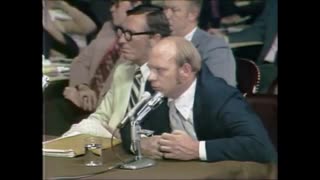 3:38:42
3:38:42
The Memory Hole
1 month agoWatergate Hearings Day 42: Martin Kelly and Robert Benz (1973-10-04)
515 -
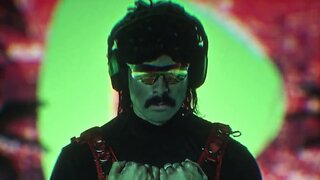 0:46
0:46
Dr Disrespect
2 days agoIt's not just a stream... it's an experience
467K2.79K -
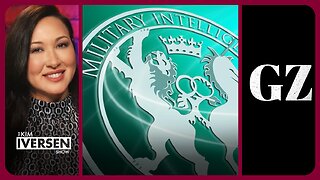 1:28:27
1:28:27
Kim Iversen
1 day agoBOMBSHELL: Secret British Military Plot to Prolong the Ukraine War And Take Down The Grayzone
77.3K50 -
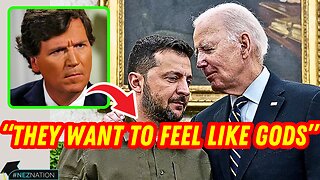 11:54
11:54
Professor Nez
4 hours ago🚨CHILLING REVELATION: Tucker Carlson Reveals Dems NEXT PLAN to STOP Trump!
38.5K24 -
 6:51
6:51
Colion Noir
4 hours agoI have Something To Say To Gun Owners
22.7K16 -
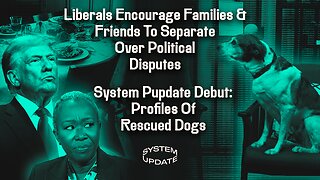 1:18:24
1:18:24
Glenn Greenwald
8 hours agoLiberals Encourage Family & Friends To Separate Over Political Disputes; Segment Debut Of System Pupdate: Profiles Of Rescued Dogs | SYSTEM UPDATE #373
83.5K138 -
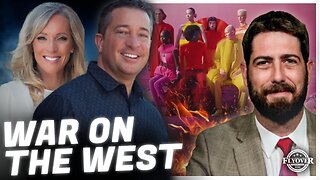 1:24:53
1:24:53
Flyover Conservatives
23 hours agoMarketing Madness or Manipulation? The War on Western Identity - Alex Newman; Economic Update - Dr. Kirk Elliott | FOC Show
25.2K3 -
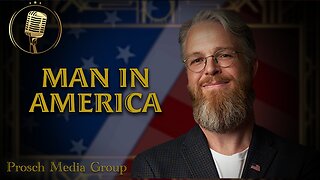 1:15:05
1:15:05
PMG
23 hours ago $3.75 earned"Big Pharma EXPOSED: The HIDDEN Cures They Tried to Bury"
21.7K4 -
 LIVE
LIVE
Tundra Gaming Live
5 hours ago $1.43 earnedThe Worlds Okayest War Thunder Stream
263 watching -
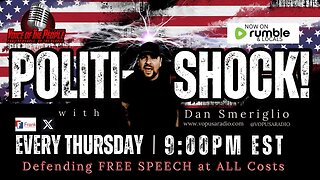 1:49:52
1:49:52
VOPUSARADIO
12 hours agoPOLITI-SHOCK! Back To Back Guests: Rebekah Koffler & Dr. Michael Schwartz
14.1K